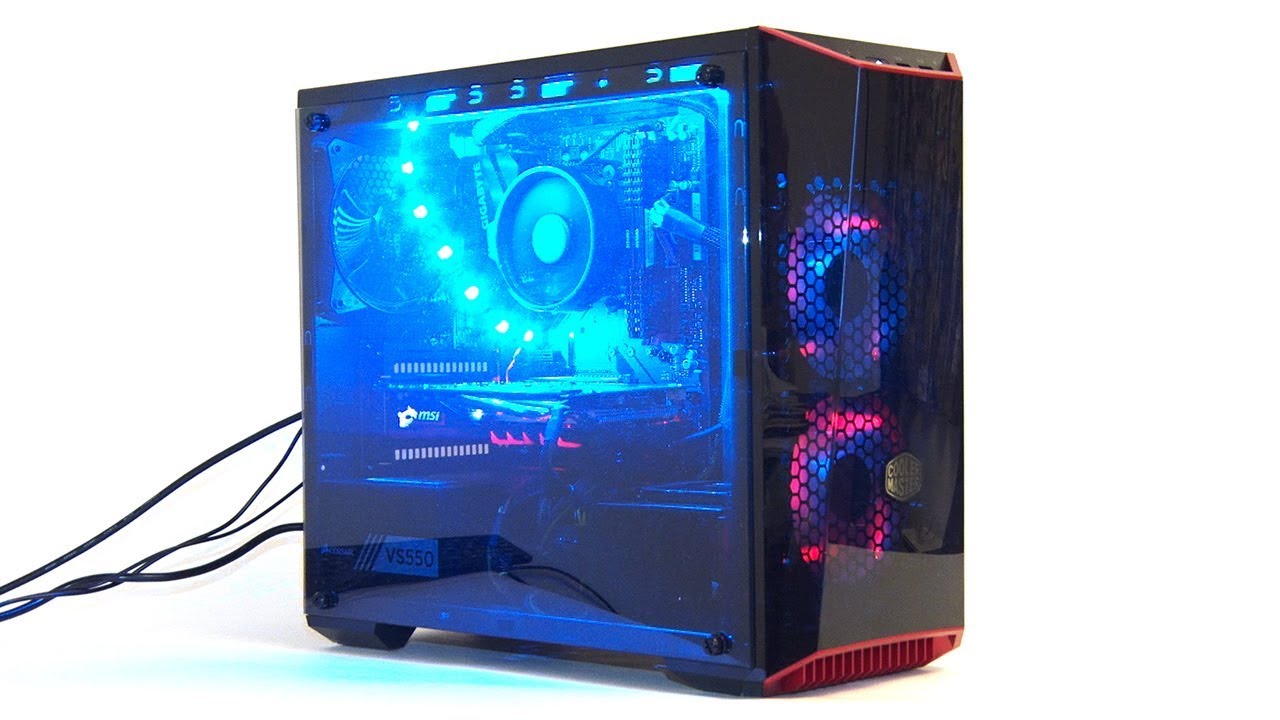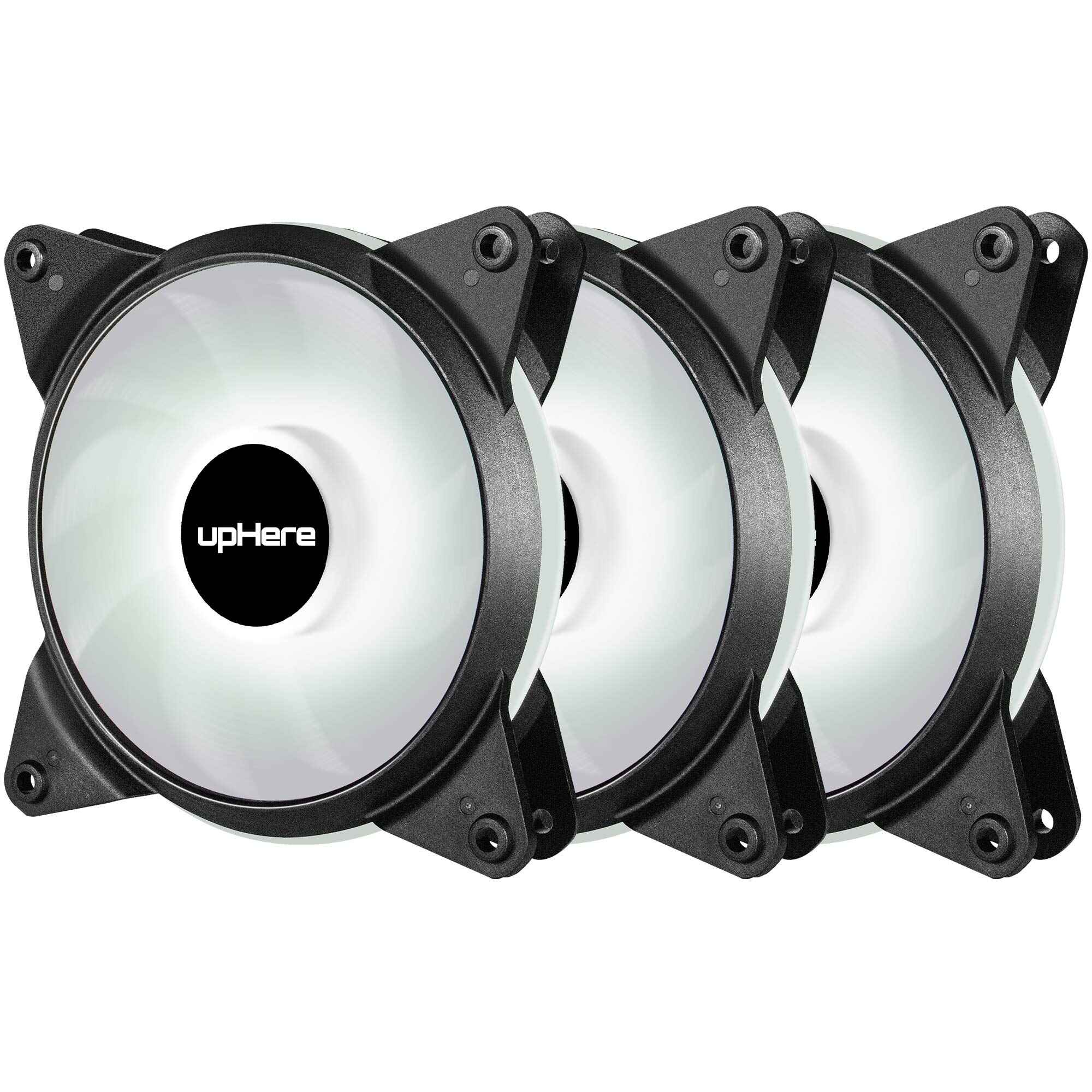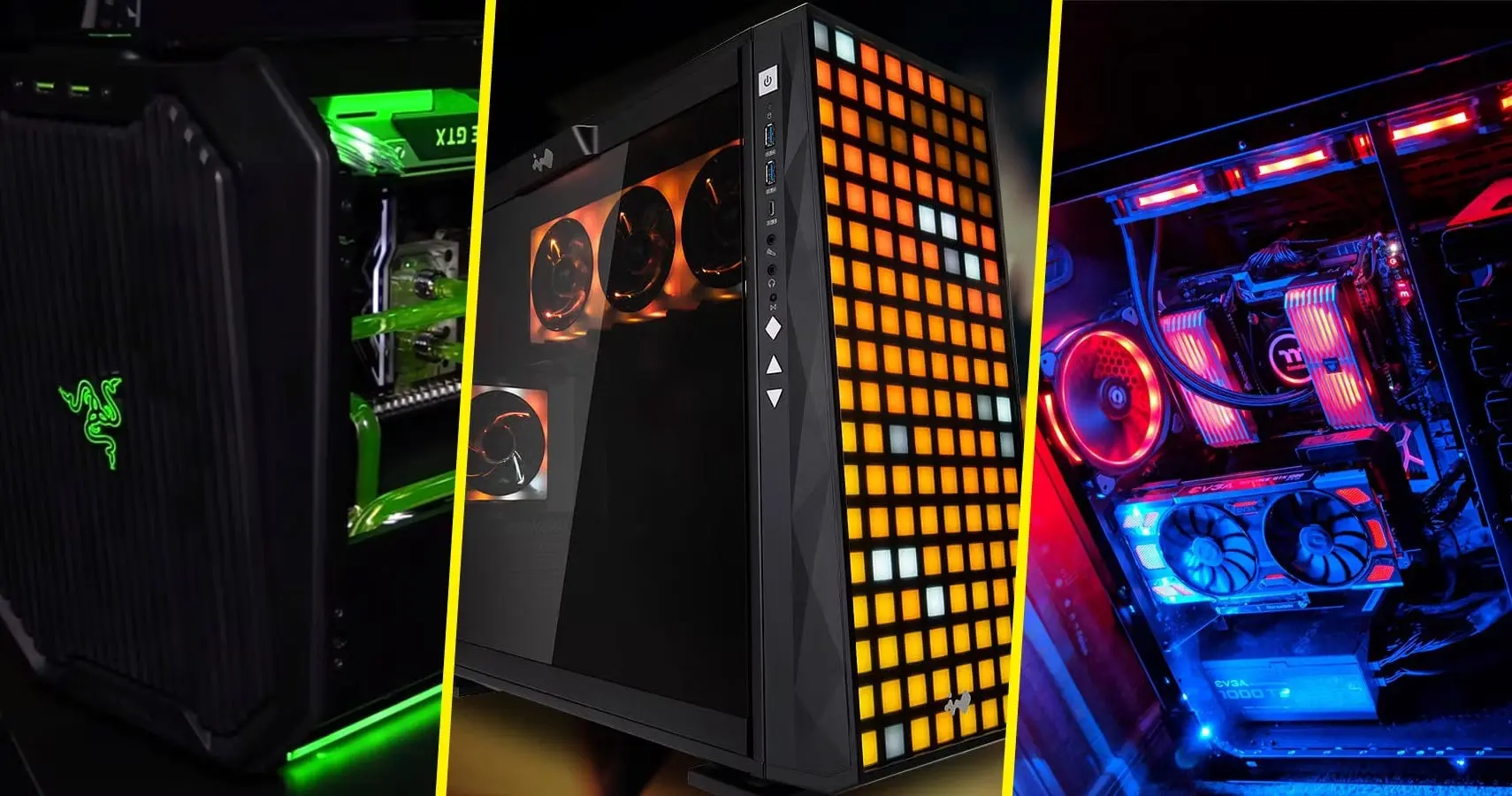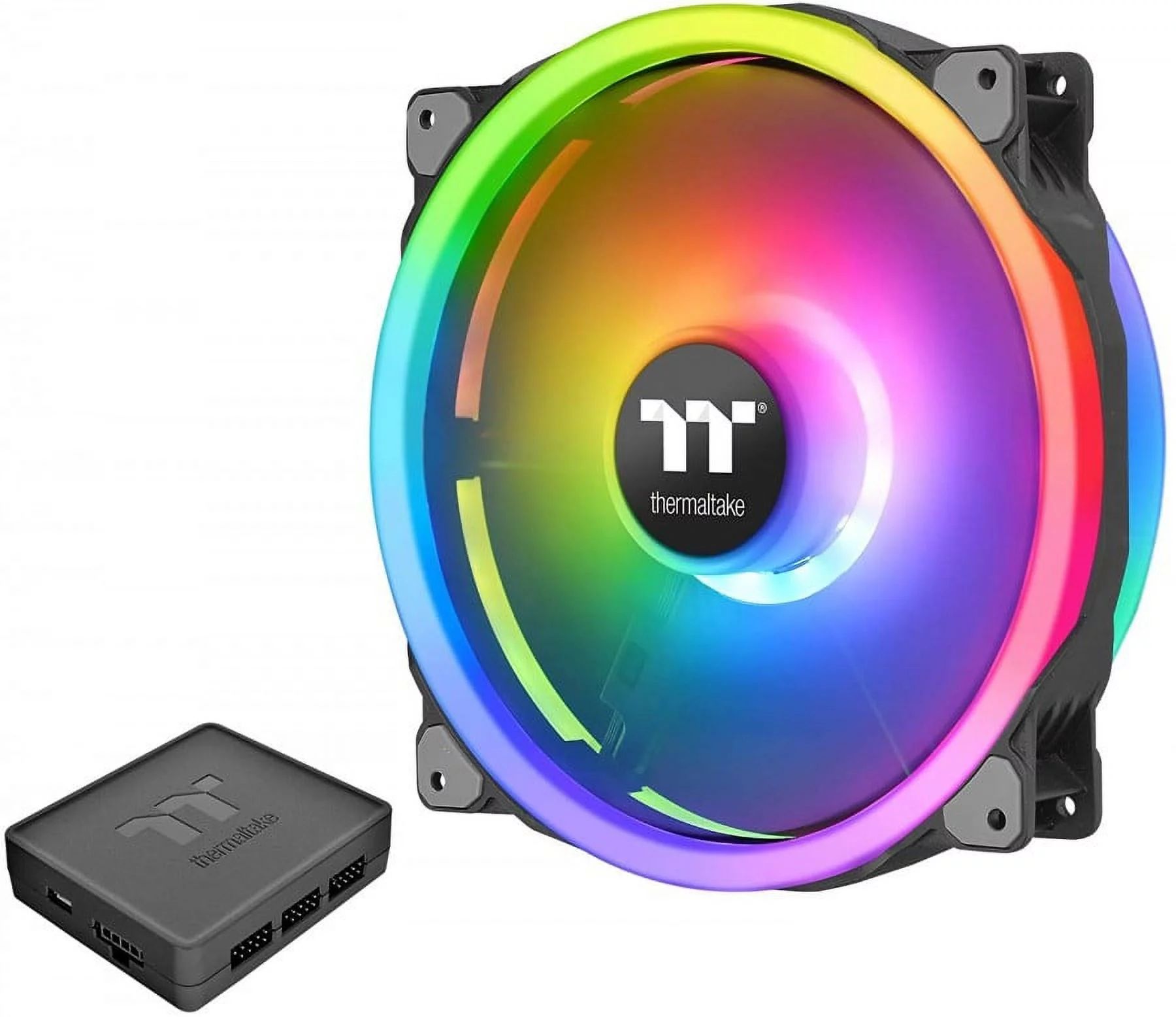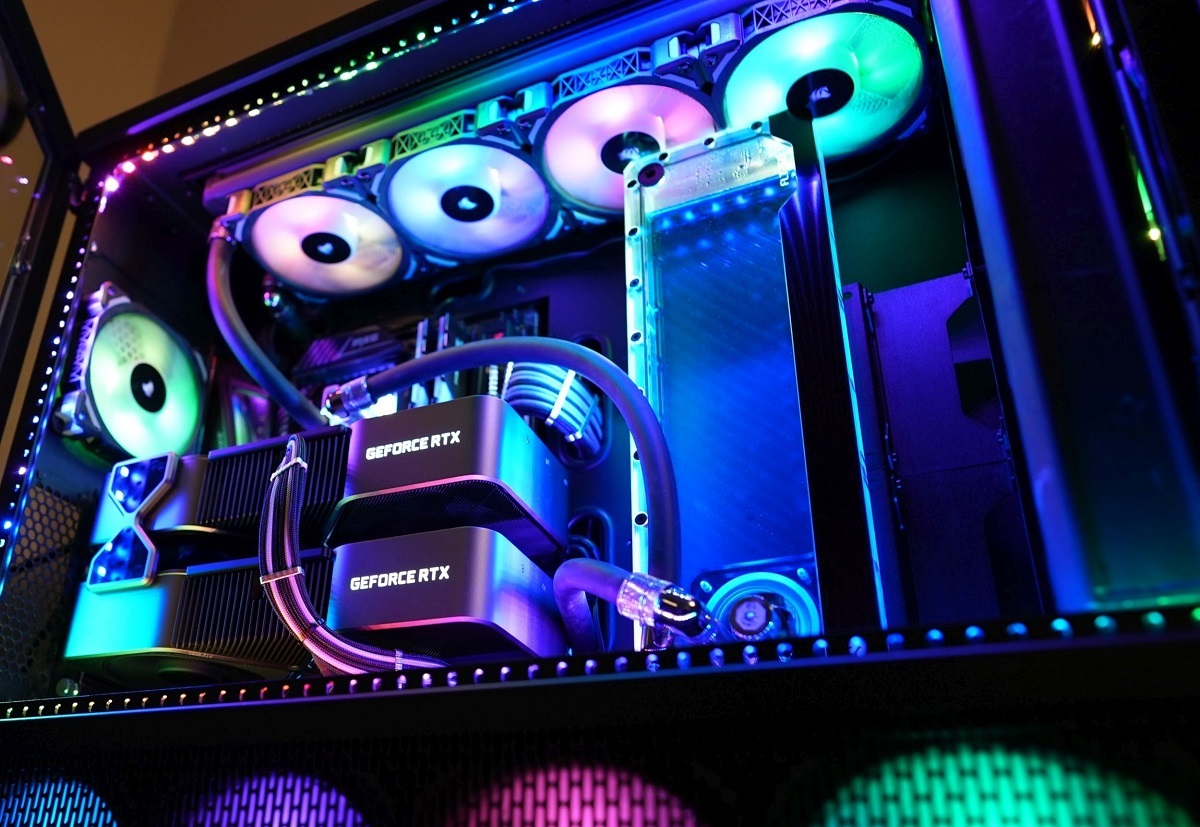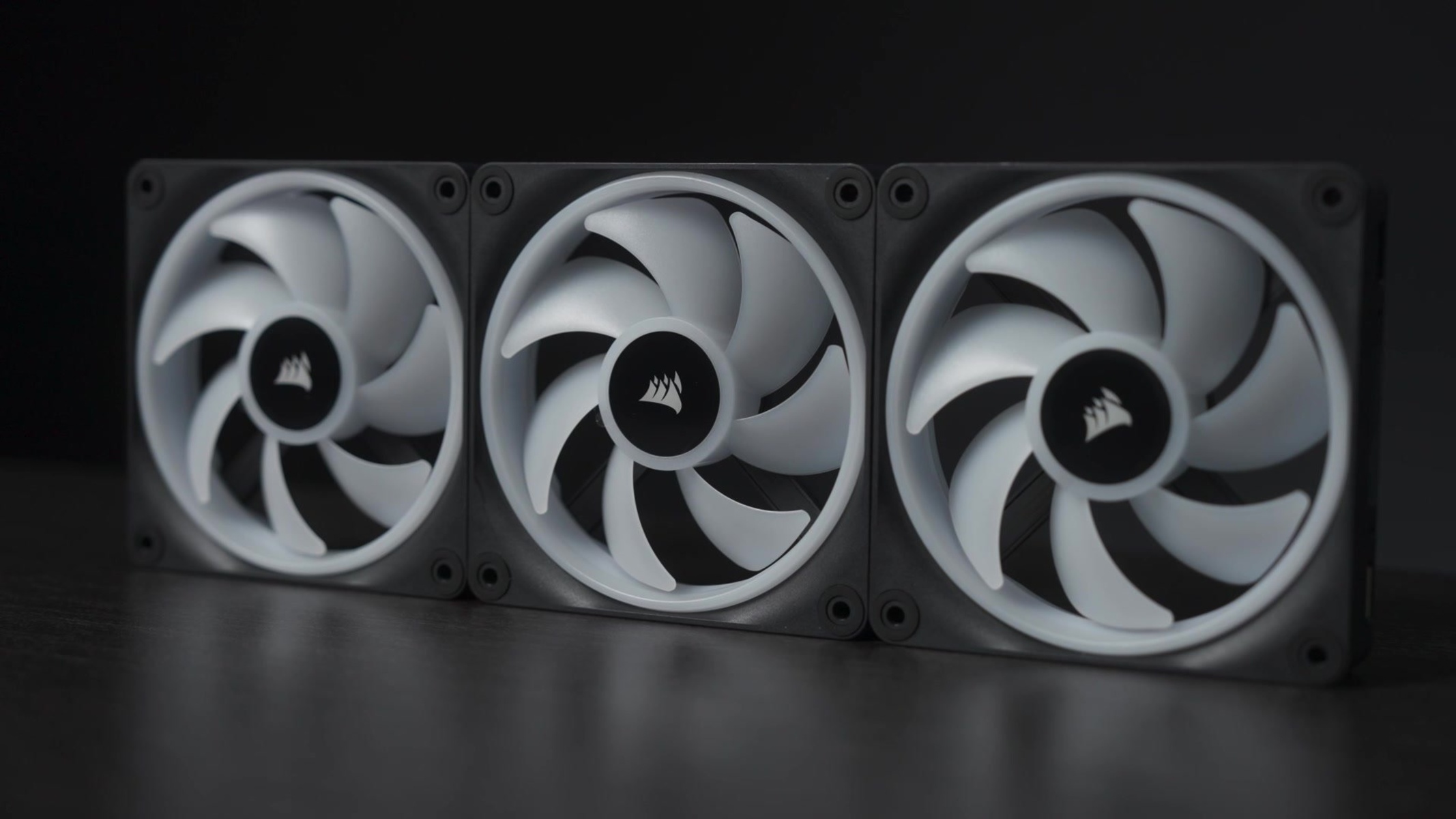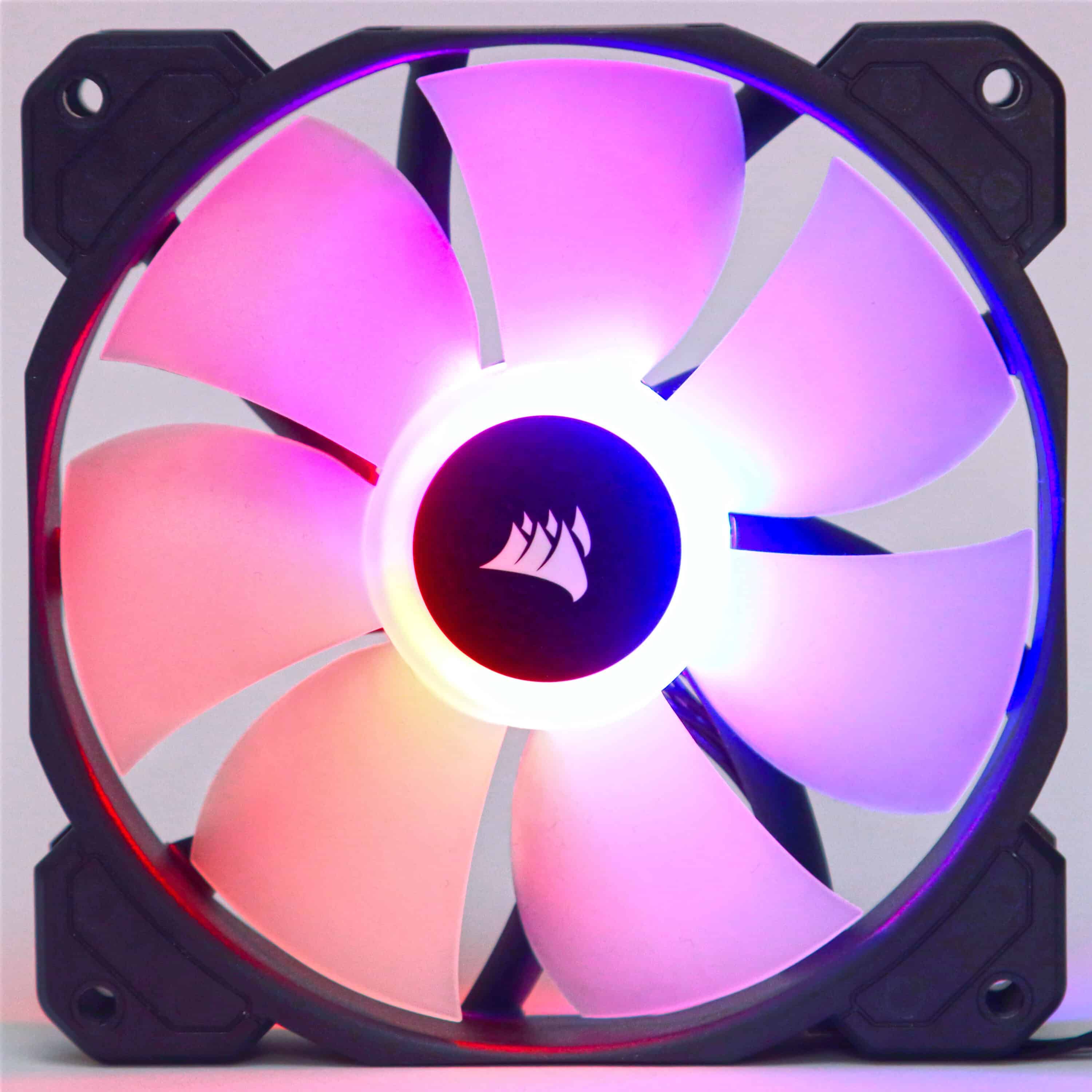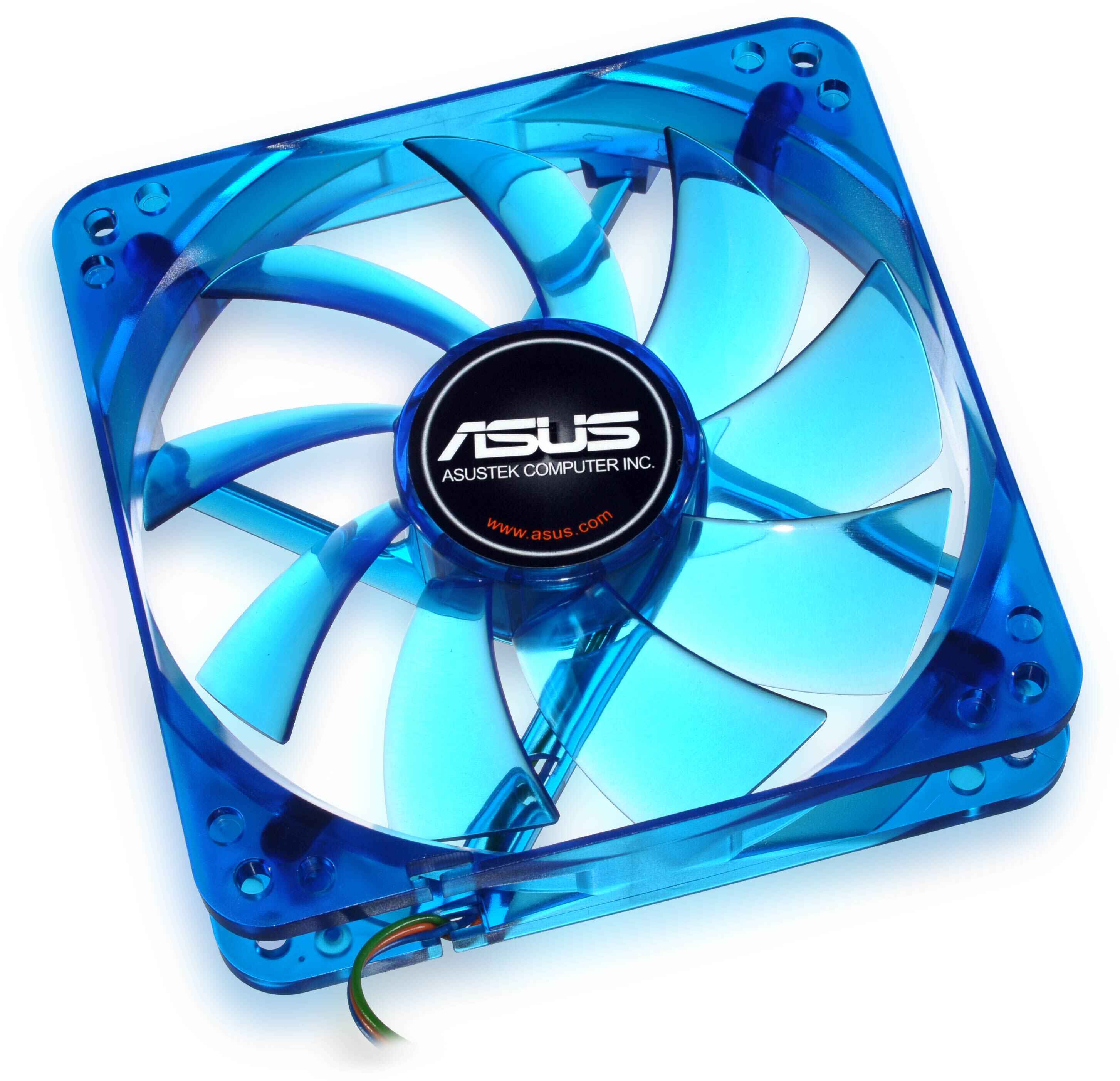Introduction
Case fan LED lights are a popular feature in modern computer cases. They not only provide a vibrant and visually appealing look, but they also aid in maintaining proper airflow and cooling within the system. These LED lights are typically located on the fan blades or around the fan housing, and they come in a variety of colors to suit different aesthetic preferences.
Controlling case fan LED lights allows users to customize the lighting effects of their computer system. Whether you’re a hardcore gamer looking to create an immersive gaming experience or a tech enthusiast who wants to showcase a visually striking PC build, having control over the LED lights can add a unique personal touch to the overall design.
In this article, we will explore why controlling case fan LED lights is desirable and discuss various methods to achieve this. Whether you prefer a hardware-based solution, software control, or manual control, we will highlight the different options available to help you make an informed decision based on your specific requirements.
Before diving into the methods, it’s important to understand the factors that should be considered when controlling case fan LED lights. These factors include compatibility, ease of use, flexibility, and overall system integration. By considering these factors, you can ensure a seamless experience and prevent any potential issues that may arise from incompatible hardware or software.
So, if you’re ready to take your PC aesthetics to the next level and create a unique lighting setup that matches your style and preferences, let’s dive into the world of controlling case fan LED lights and explore the methods available to achieve this customization.
Understanding Case Fan LED Lights
Before delving into the methods to control case fan LED lights, it’s important to have a basic understanding of how these lights work and the benefits they provide. Case fan LED lights are small light-emitting diodes (LEDs) embedded within or around the fan blades or housing of computer cooling fans. They are designed to add a visually appealing element to the computer system, creating an attractive glow or lighting effect.
LED lights come in a variety of vibrant colors, allowing users to customize the aesthetics of their PC build. Common colors include red, blue, green, and white, among others. Some case fan LED lights also feature multicolor options or even RGB (Red-Green-Blue) lighting, which allows for a wide range of color combinations and effects.
In addition to enhancing the visual appeal, case fan LED lights serve a practical purpose. They provide a clear indication of whether the fans are functioning properly or not. A steady glowing LED light indicates that the fan is running smoothly, while a flickering or dim light may suggest a malfunctioning fan that requires attention or replacement.
Another benefit of case fan LED lights is their contribution to overall system cooling. While the primary purpose of case fans is to circulate air and cool down computer components, the LED lights on these fans can help with heat dissipation. The light emitted by the LEDs helps to dissipate excess heat generated by the fans, contributing to better thermal management within the system.
It is also worth noting that many case fan LED lights are designed with low power consumption in mind. They are energy-efficient and have a minimal impact on the overall power consumption of the system. This means that users can enjoy the aesthetic benefits of LED lighting without significantly affecting the overall power consumption or increasing electricity bills.
Overall, understanding case fan LED lights allows users to appreciate their dual functionality. They provide an attractive visual element to PC builds and serve as a practical indicator of fan functionality. With this understanding in mind, let’s now explore why controlling case fan LED lights can be a desirable feature for PC enthusiasts and gamers alike.
Why Control Case Fan LED Lights?
The ability to control case fan LED lights offers several advantages and is a desirable feature for PC enthusiasts and gamers. Let’s explore some of the key reasons why controlling these LED lights can enhance the overall user experience:
- Aesthetic Customization: One of the primary reasons to control case fan LED lights is to customize the visual appearance of the computer system. With LED lights available in various colors and effects, users can create stunning lighting setups that match their personal style and preferences. From a subtle, single-color glow to a dynamic, multicolor display, the options are limitless.
- Gaming Atmosphere: For gamers, controlling case fan LED lights can enhance the gaming experience by creating an immersive atmosphere. Syncing the LED lights with in-game events, such as flashing red during intense action or pulsating blue during calm moments, adds an extra layer of immersion and excitement to gameplay.
- Showcasing Builds: PC enthusiasts who take pride in their system builds often want to showcase their creations. Controlling case fan LED lights allows them to highlight specific components or create unique lighting patterns that draw attention to the system’s aesthetics. It adds a wow factor when displaying the PC at gaming conventions or capturing photos/videos for social media.
- Mood Enhancement: LED lights have the power to set the mood in any environment. Whether it’s a soothing blue glow for a relaxed ambiance or a vibrant rainbow display for a party atmosphere, controlling case fan LED lights enables users to create the desired mood and atmosphere in their gaming or workspace.
- Personalization and Expression: Your computer system is an extension of your personality and interests. Controlling case fan LED lights gives you the opportunity to express yourself and make your system uniquely yours. It allows you to showcase your creativity and individuality by creating lighting setups that match your favorite colors, themes, or even reflect your favorite games or movies.
By having control over the case fan LED lights, users can unleash their creativity, add a personalized touch to their computer systems, and create an ambiance that suits their mood and style. The ability to customize these lights is a powerful feature that allows PC enthusiasts and gamers to elevate their overall computing experience to a new level.
Methods to Control Case Fan LED Lights
Controlling case fan LED lights can be achieved through various methods, each offering its unique advantages and customization options. Let’s explore three commonly used methods:
- Fan Controller: A fan controller is a hardware device that allows users to control the speed and lighting effects of case fans, including the LED lights. It is typically installed in a 5.25-inch drive bay or mounted internally in the computer case. Fan controllers offer physical knobs, buttons, or touchscreens to adjust fan speeds and lighting settings. They provide precise control over the LED lights, allowing users to customize colors, effects, and even synchronize them with other components or external software.
- Software Control: Many motherboard manufacturers offer software utilities that enable users to control case fan LED lights. These software solutions provide a user-friendly interface that allows users to adjust lighting settings directly from their desktop. With software control, users can easily change colors, effects, and even create custom lighting profiles. Additionally, some software allows synchronization with other components such as RGB RAM or graphics cards, enabling a unified lighting experience across the system.
- Manual Control: For users who prefer a simpler approach, manual control of case fan LED lights is an option. This method involves directly connecting the LED cables from the case fans to a power source. By manually switching the power on or off, users can control when the LED lights are active or inactive. While this method provides basic control over the LED lights, it lacks the flexibility and customization options offered by fan controllers or software solutions.
Each method has its own set of advantages and considerations. Fan controllers provide the most comprehensive control over case fan LED lights, with precise adjustments and synchronization capabilities. Software control offers convenience and flexibility, allowing users to make changes directly from their desktop. Manual control is a simpler option that may appeal to users who prefer a more straightforward and hands-on approach.
When deciding on the method to control case fan LED lights, it’s important to consider factors such as compatibility, ease of use, customization options, and integration with other components. Additionally, users should ensure that the chosen method is compatible with their specific case fan models and motherboard or software requirements.
Now that we have explored the methods available to control case fan LED lights, let’s move on to discussing important factors to consider before making a decision.
Method 1: Fan Controller
A fan controller is a dedicated hardware device that allows users to have precise control over case fan LED lights and fan speeds. It provides a convenient and centralized way to adjust the lighting effects and customize the cooling performance of the system. Let’s take a closer look at how a fan controller works and the advantages it offers:
A fan controller typically comes in the form of a physical device that is either installed in a 5.25-inch drive bay or mounted internally in the computer case. It features knobs, buttons, or touchscreens that allow users to adjust fan speeds and lighting settings with ease. The fan controller provides power and control to the case fans, including the LED lights, allowing users to customize the colors, effects, and brightness to their liking.
One of the main advantages of using a fan controller is the ability to precisely control and fine-tune the cooling performance of the system. By adjusting fan speeds, users can find the perfect balance between cooling efficiency and noise level. Additionally, fan controllers often provide temperature monitoring features that display real-time system temperatures, enabling users to make informed adjustments based on their cooling needs.
When it comes to LED lighting control, fan controllers offer a wide range of customization options. Users can choose from various colors, effects, and even create their own lighting profiles. Some advanced fan controllers even allow for synchronization with other components or external software, providing a unified lighting experience throughout the entire system. This synchronicity can create stunning lighting displays that react to in-game events or music, taking the immersive experience to another level.
Furthermore, fan controllers are designed to be user-friendly, with intuitive interfaces that make adjusting settings a breeze. The physical knobs, buttons, or touchscreens provide a tactile experience, allowing users to make quick changes on the fly without the need for software or complex configuration. This ease of use makes fan controllers an appealing option for users who prefer a more hands-on approach to controlling their case fan LED lights.
It’s important to keep in mind that compatibility is a critical factor when selecting a fan controller. Check the specifications and requirements to ensure that the fan controller is compatible with your specific case fan models and motherboard. Additionally, consider the number of fan channels the fan controller supports, as it determines the number of fans you can control simultaneously.
Overall, a fan controller is a powerful tool that allows users to have complete control over case fan LED lights and fan speeds. With its flexibility, precision, and ease of use, a fan controller provides an effective way to customize and enhance the cooling performance and aesthetics of the computer system.
Method 2: Software Control
Software control is another popular method to control case fan LED lights, offering users a convenient and user-friendly way to customize and manage the lighting effects directly from their desktop. Let’s explore how software control works and the advantages it brings:
Many motherboard manufacturers provide software utilities that allow users to control case fan LED lights and other RGB components. These software solutions provide a graphical user interface (GUI) that enables users to adjust lighting settings, colors, effects, and synchronization options with ease. The software is typically compatible with specific motherboard models or RGB lighting ecosystems, ensuring seamless integration and control.
One of the significant advantages of using software control is the convenience it offers. Users can make changes and customize the lighting effects of their case fan LED lights without the need for additional hardware devices. With just a few clicks, users can switch between different color schemes, apply pre-set lighting profiles, adjust brightness, speed, and even synchronize the lighting with other RGB components, such as RAM modules or graphics cards.
Software control also allows for more advanced customization options, providing users with a greater level of control over their lighting setups. Some software solutions offer features like per-LED control, where users can individually adjust the lighting of each LED on the fan or create intricate lighting patterns using a range of effects, including gradients, pulses, or waves. This level of control enables users to unleash their creativity and create unique lighting displays that suit their personal style and preferences.
In addition to customization, software control often includes additional features like temperature monitoring and fan speed adjustment. Users can monitor the system’s temperatures in real-time and make adjustments to the fan speeds as needed, ensuring optimal cooling performance. This integration of lighting control and fan speed adjustment within a single software interface provides a comprehensive solution for managing both cooling and aesthetics.
It is important to note that software control is heavily reliant on compatibility with the motherboard and RGB components. Ensure that your motherboard is compatible with the software and that your case fans support the required RGB lighting standards (e.g., RGB Fusion for Gigabyte motherboards or Aura Sync for ASUS motherboards). Compatibility should be verified before selecting a software control solution to ensure a seamless and hassle-free experience.
Overall, software control provides an efficient and user-friendly method to manage case fan LED lights. It offers convenience, advanced customization options, and integration with other RGB components, making it a popular choice for users who prefer a software-based approach to control their lighting setups.
Method 3: Manual Control
For users who prefer a simpler approach to controlling case fan LED lights, manual control offers a straightforward and hands-on method. Manual control involves directly connecting the LED cables from the case fans to a power source and manually switching the power on or off. Let’s explore the benefits and considerations of manual control:
Manual control is a basic method that allows users to have direct control over the activation and deactivation of the LED lights. By physically switching the power on or off, users can determine when the LED lights are active or inactive. This method is straightforward and doesn’t require additional hardware or software.
One of the advantages of manual control is its simplicity. There are no complex configurations or settings to adjust. Users can easily control the LED lights by toggling the power switch when desired. This makes manual control a suitable option for those who prefer a more hands-on approach or have a preference for a fixed lighting setup without the need for constant adjustments.
In terms of compatibility, manual control is generally compatible with all case fans that have built-in LED lights. Since it doesn’t rely on specific hardware or software, users can manually control the LED lights of their case fans regardless of the motherboard or system specifications. This makes manual control a versatile option that can be used with various computer configurations.
While manual control offers simplicity, it does have limitations in terms of customization. Unlike fan controllers or software control, manual control does not provide the ability to adjust colors, effects, or brightness levels. The LED lights will remain in their default state as designed by the manufacturer. Thus, users seeking a high level of customization or dynamic lighting effects may find manual control limiting.
Another consideration is the need for easy accessibility to the fan cables and power switch. Depending on the placement of the case fans and the computer case design, accessing the LED cables and power switch may require opening the case or reaching behind the computer. This can be inconvenient if frequent adjustments to the LED lights are desired.
Overall, manual control offers a simple and no-frills method to control case fan LED lights. It provides users with direct control over the activation and deactivation of the LED lights without needing additional hardware or software. While it lacks the customization options of other methods, it remains a versatile and accessible choice for those who prefer a straightforward and hands-on approach.
Factors to Consider
When deciding on the method to control case fan LED lights, there are several important factors to consider. These factors will help ensure that you make an informed decision that aligns with your specific needs and preferences. Let’s explore these factors:
- Compatibility: Ensure that the chosen method is compatible with your case fans and motherboard. Check the specifications and requirements of the fan controller, software control, or manual control method to ensure that it supports your specific hardware configuration. Compatibility is crucial to ensure seamless integration and functionality.
- Level of Customization: Consider the level of customization you desire for your case fan LED lights. Fan controllers and software control offer a higher degree of customization, with options to adjust colors, effects, and even synchronize with other components. Manual control provides a more basic on/off control without customization. Choose a method that aligns with your desired level of flexibility and personalization.
- Convenience and Ease of Use: Evaluate the convenience and ease of use offered by each method. Fan controllers and software control provide intuitive interfaces that allow for easy adjustments. Manual control is simpler but may require physical access to the fan cables and power switch. Consider your preference for convenience and the level of hands-on control you desire.
- Integration with Other Components: If you have other RGB components in your system, consider the compatibility and integration options provided by the chosen method. Certain fan controllers and software control solutions offer synchronization capabilities, allowing for a unified lighting experience across multiple components. Ensure that the chosen method can work seamlessly with your existing RGB ecosystem.
- Noise Level: Depending on the cooling performance and fan speed adjustments available with each method, consider the potential impact on noise levels. Fan controllers provide direct control over fan speeds, offering a balance between cooling and noise. Software control may offer fan speed adjustments as well. Take into account your preference for a quiet system and choose a method that allows you to achieve an optimal balance between cooling and noise.
By considering these factors, you can make an informed decision on the method to control your case fan LED lights. Whether you prioritize customization, convenience, integration, or noise levels, choosing the right method will allow you to enhance the aesthetics and functionality of your computer system while aligning with your specific requirements and preferences.
Conclusion
Controlling case fan LED lights is a desirable feature for PC enthusiasts and gamers who want to enhance the aesthetics and customize their computer systems. Whether you prefer a hardware-based fan controller, software control, or manual control, each method offers its unique advantages and customization options.
Fan controllers provide precise control over fan speeds and LED lighting effects, allowing for comprehensive customization and synchronization with other components. Software control offers convenience, advanced customization, and integration with RGB ecosystems, providing a user-friendly interface to adjust lighting settings. Manual control offers a simple on/off control, ideal for users who prefer a more hands-on approach without the need for additional hardware or software.
When considering the method to control case fan LED lights, factors such as compatibility, customization options, convenience, integration with other components, and noise levels should be taken into account. These factors will help you choose the method that best suits your specific needs and preferences.
Regardless of the method chosen, controlling case fan LED lights allows users to unleash their creativity, personalize their computer systems, and create a visually stunning setup. Whether you want to showcase your system, create an immersive gaming experience, set the mood, or simply add a touch of personal expression, controlling case fan LED lights provides the flexibility and customization options to do so.
So, dive into the world of controlling case fan LED lights, explore the available methods, and create a computer system that truly reflects your style, preferences, and individuality.







